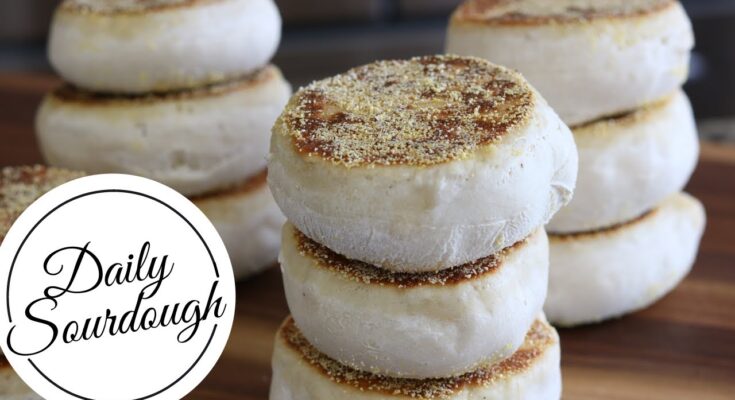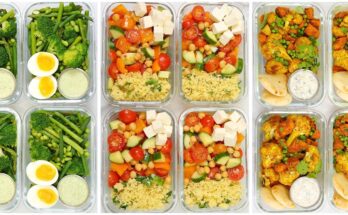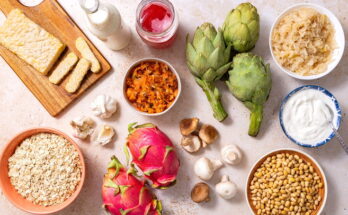Sourdough English Muffins Recipe: There’s something irresistibly charming about sourdough English muffins. Unlike the bland, mass-produced versions you’ll find in supermarkets, these muffins are packed with tangy flavor, fluffy texture, and those famous nooks and crannies that soak up butter like a dream. But what makes them truly special is the fermentation process. Thanks to wild yeast and beneficial bacteria in the sourdough starter, you get not only better flavor but also a healthier and easier-to-digest product.
Sourdough baking has seen a massive resurgence, and for good reason. It connects us to centuries-old traditions while offering modern health perks. The slow fermentation helps break down gluten and phytic acid, making the muffins gentler on your stomach. Plus, it develops complex flavors that you just can’t rush.
Unlike traditional yeast-based recipes, these muffins rise through the power of your natural sourdough starter. That’s right—no commercial yeast needed. This method does require patience and planning ahead, but the end result is well worth it. Lightly crisped on the outside, pillowy in the middle, and naturally leavened—sourdough English muffins are a breakfast treat that hits all the right notes.
Why You’ll Love This Recipe
- No commercial yeast required – Let your sourdough starter do the heavy lifting.
- Rich, complex flavor – A subtle tanginess from fermentation brings these muffins to life.
- Incredible texture – Soft and airy inside with just the right amount of chew and crispy golden crust.
- Versatile – Perfect for breakfast sandwiches, eggs Benedict, or simply toasted with jam.
- Freezer-friendly – Make a big batch and freeze them for quick, delicious breakfasts later.
Even if you’re new to sourdough, this guide breaks down every step so you can succeed from your very first batch. Let’s get into what you’ll need to get started.
Ingredients You’ll Need
Basic Pantry Staples
To make the base dough, you’ll need just a handful of simple ingredients:
- All-purpose flour or bread flour (500g / about 4 cups) – Bread flour gives a slightly chewier texture, while all-purpose flour offers a more tender crumb.
- Milk (250g / about 1 cup) – Adds richness and moisture.
- Water (100g / just under ½ cup) – Helps hydrate the dough.
- Salt (10g / 2 tsp) – Balances flavor.
- Honey or sugar (15g / 1 tbsp) – Adds a touch of sweetness and helps with browning.
These ingredients form the base of your dough, providing structure, moisture, and taste. Quality matters here—organic flour and whole milk, if available, can enhance both flavor and nutrition.
Sourdough Starter – The Star Ingredient
The sourdough starter is the backbone of this recipe. You’ll need:
- 100g (about ½ cup) active sourdough starter – Fed and bubbly, ideally 4–6 hours after feeding.
A mature and active starter ensures proper fermentation, rise, and flavor. If your starter isn’t bubbly and doubles in size within 4-6 hours of feeding, hold off and give it another refresh before baking.
This live culture is made from just flour and water but is packed with wild yeast and beneficial bacteria. Over time, your starter will develop a unique aroma and taste that shines through in your baked goods.
Optional Ingredients for Flavor Boosts
Want to get creative? Try adding one of these optional ingredients to elevate your muffins:
- Cornmeal or semolina (for dusting) – Creates that classic muffin crust.
- Melted butter or olive oil (1 tbsp) – Adds richness to the dough.
- Dried herbs or spices – Rosemary, thyme, or garlic powder for savory twists.
- Cheese or raisins – For a fun variation (more on that later).
These optional ingredients can help you personalize the recipe. You can even split your dough and make a few different flavor variations in one batch.
Equipment You’ll Need
Kitchen Tools for Perfect English Muffins
You don’t need a bakery’s worth of tools, but a few key pieces will make the process smoother:
- Mixing bowl – For combining and resting the dough.
- Dough scraper or spatula – To handle the sticky dough more easily.
- Cast iron skillet or griddle – Essential for that signature golden crust.
- Biscuit cutter or glass – To cut perfect rounds from the dough.
- Digital scale – For precise measurements.
- Bench knife – Helpful for shaping and dividing dough.
- Kitchen towel or plastic wrap – For covering during proofing.
- Baking sheet and parchment paper – For transferring and resting the dough rounds.
Alternative Tools if You Don’t Have Everything
Missing a biscuit cutter? Use a drinking glass. No cast iron skillet? A heavy-bottomed pan will work just fine. Don’t let lack of gear stop you—this recipe is forgiving and flexible.
If you’re baking in a small kitchen, even a stovetop pan and a clean counter can get the job done beautifully. The goal is to apply steady heat and create a golden-brown crust, so use whatever tools you have that can help with that.
Preparing the Sourdough Starter
How to Feed Your Starter
Your sourdough starter should be refreshed 4-6 hours before you plan to mix your dough. Here’s how to do it:
- Discard all but 50g of your existing starter.
- Add 50g flour and 50g water.
- Mix until smooth and let it sit at room temperature.
The starter should become bubbly and double in size—this means it’s active and ready for baking.
You can feed your starter with whole wheat or all-purpose flour. Some bakers use rye flour for added activity. The important thing is consistency: use the same ratio of flour to water, and don’t overfeed or underfeed it.
Signs Your Starter Is Ready for Baking
Here’s what to look for before using your starter:
- Bubbly and active – Plenty of air pockets.
- Doubled in size – Within 4-6 hours of feeding.
- Pleasant aroma – Slightly tangy, not sour or alcoholic.
- Passes the float test – Drop a spoonful in water; it should float.
If your starter doesn’t pass these checks, it’s better to wait. An underactive starter will result in flat, dense muffins with poor flavor development.
Step-by-Step Instructions to Make Sourdough English Muffins
Step 1: Mix the Dough
In a large mixing bowl, combine 1 cup active sourdough starter, 1 cup milk (lukewarm), 2 tablespoons sugar, 2 tablespoons butter (softened), and 2¾ cups all-purpose flour. Stir until a sticky dough forms, then add 1 teaspoon salt and mix again until everything is fully incorporated. The dough should be soft and slightly tacky but not wet. If it’s too sticky, add a tablespoon of flour at a time until it comes together. Cover the bowl with a damp towel or plastic wrap and let it rest for 30 minutes to allow the flour to hydrate.
Step 2: Bulk Fermentation
After resting, knead the dough by hand for about 5 minutes, or until smooth and elastic. Place it back in the bowl, cover it tightly, and let it rise at room temperature for 6–8 hours, or overnight if your kitchen is cool. The dough should double in size and feel airy — this long fermentation develops that signature tangy sourdough flavor.
Step 3: Shaping the Muffins
Once the dough has risen, lightly flour your work surface and gently turn it out. Roll the dough to about ¾ inch thick and cut out circles using a 3-inch biscuit cutter or glass. Transfer the rounds to a parchment-lined baking sheet dusted with cornmeal or semolina flour, ensuring each side gets a light coating. This prevents sticking and gives the muffins their classic golden crust. Gather and re-roll any scraps until all the dough is used.
Step 4: Second Rise
Cover the shaped muffins loosely with a clean kitchen towel and let them rise for 1–2 hours, or until slightly puffy. The timing may vary depending on room temperature — they should look light and airy, not flat. Don’t rush this step; it’s key to getting that soft, fluffy interior full of signature nooks and crannies.
Step 5: Cooking the Muffins
Preheat a cast iron skillet or griddle over medium-low heat. Lightly grease the surface with butter or oil, then place the muffins in the pan, leaving space between each. Cook for 5–6 minutes per side, or until golden brown and cooked through. If the outside browns before the inside is done, finish them in a 350°F (175°C) oven for 5–10 minutes.
Let the muffins cool slightly before splitting them open with a fork (never a knife — it preserves the texture!). Toast and serve with butter, jam, or a fried egg for the perfect breakfast.
Soft, tangy, and filled with airy pockets, these Sourdough English Muffins are a breakfast dream — rustic, flavorful, and entirely worth the wait.
Pro Tips for Perfect Muffins Every Time
Avoiding Common Mistakes
Even seasoned bakers can slip up, so here’s a list of pitfalls to avoid:
- Underfed starter: If your starter isn’t active, your muffins will be dense and flat.
- Too much flour: The dough is supposed to be sticky. Adding flour to make it easier to handle will compromise texture.
- High heat cooking: It may look golden on the outside but remain raw inside. Slow and low wins the race.
- Not allowing dough to rise fully: Impatience here leads to underproofed muffins that lack flavor and volume.
- Cutting too soon: Slicing them while hot ruins the crumb structure—cooling is non-negotiable.
Getting That Signature Nook and Cranny Texture
The nooks and crannies are what define an English muffin, and there are a few keys to getting them just right:
- High hydration: Wet dough leads to steam during cooking, creating open pockets inside.
- Gentle handling: Avoid degassing or squashing the dough.
- Stretch-and-fold method: Builds gluten without overworking.
- Proper cooking time: A slow cook gives the insides time to form that airy web.
Want extra insurance? Split your muffin with a fork instead of a knife to preserve the pockets.
How to Store and Reheat Sourdough English Muffins
Storing for Freshness
Once your sourdough English muffins have completely cooled, it’s time to think about storage. If you plan on eating them within a few days, here’s the best method:
- Store in an airtight container or zip-top bag at room temperature.
- Keep them away from direct sunlight or moisture.
- Use within 3–4 days for optimal freshness.
The outer crust may soften slightly over time, but the flavor remains fantastic. To keep the muffins from going stale too quickly, add a paper towel to the container to absorb any excess moisture, which helps maintain their texture.
If you’re like most home bakers and love preparing things in batches, storing extra muffins correctly ensures that none of your hard work goes to waste.
Freezing Instructions
To keep your sourdough English muffins tasting fresh for weeks, freezing is the way to go.
Here’s how:
- Slice the muffins in half before freezing. This makes toasting later a breeze.
- Place parchment paper between each half to prevent sticking.
- Store them in a freezer-safe bag or container.
- Label with the date—they’ll stay fresh for up to 3 months.
When you’re ready to eat, you don’t even need to thaw them. Just pop the frozen halves straight into the toaster or toaster oven for a quick, crispy finish.
This method is great for busy mornings, giving you homemade sourdough goodness in under five minutes.
Best Reheating Methods
Reheating sourdough English muffins is simple, but there are a few ways to elevate the texture and flavor:
- Toaster: For a crispy finish, toast the sliced muffins until golden brown.
- Oven: Place on a baking sheet at 350°F (175°C) for 8–10 minutes.
- Stovetop: Reheat on a dry skillet over medium-low heat, especially good for muffins with cheese or mix-ins.
Avoid microwaving if possible—it tends to make the texture rubbery and chewy.
For extra decadence, slather with butter while hot so it melts right into those gorgeous nooks and crannies.
Flavor Variations and Mix-ins
Sweet Add-ins
Sourdough English muffins are a blank canvas for creativity, and sweet versions are a fan favorite.
Here are a few ideas to spice things up:
- Cinnamon Raisin: Add 1 tsp cinnamon and ½ cup raisins during the final dough mix.
- Cranberry Orange: Fold in dried cranberries and a teaspoon of orange zest.
- Maple Pecan: Drizzle 2 tbsp maple syrup into the dough and mix in chopped pecans.
- Chocolate Chip: Toss in mini chocolate chips for a treat kids (and adults) will love.
For sweet mix-ins, reduce the honey slightly so the dough doesn’t become overly sticky. Also, distribute ingredients evenly to prevent clumping.
These versions pair wonderfully with cream cheese, nut butter, or a drizzle of honey. They’re also fantastic as a base for sweet breakfast sandwiches or dessert-style snacks.
Savory Twists
Looking for something more on the savory side? These muffins can handle it.
Try these tasty variations:
- Cheddar & Chive: Add ½ cup shredded cheddar and 2 tbsp chopped chives.
- Garlic Parmesan: Mix in minced garlic and grated Parmesan cheese.
- Jalapeño Cheddar: For spice lovers—add chopped jalapeños and sharp cheddar.
- Sun-dried Tomato & Basil: A Mediterranean-inspired twist.
Savory muffins are perfect for egg sandwiches, burgers, or as a side with soups and stews. To avoid overhydration, adjust the liquid slightly when adding juicy ingredients like sun-dried tomatoes.
And don’t forget to adjust your salt depending on the saltiness of your mix-ins.
Nutrition Facts and Health Benefits
Calories and Macronutrients
Here’s a general breakdown for one sourdough English muffin (without add-ins):
| Nutrient | Amount (Approx.) |
|---|---|
| Calories | 180–220 kcal |
| Carbohydrates | 36–40g |
| Protein | 5–7g |
| Fat | 1–3g |
| Fiber | 1–2g |
| Sugar | 1–2g |
| Sodium | 250–350mg |
Note: These values will vary based on flour type, add-ins, and portion size. Homemade muffins often contain fewer preservatives and additives than store-bought ones, making them a healthier choice.
Benefits of Sourdough Fermentation
Sourdough isn’t just about flavor—it also brings serious nutritional perks:
- Easier digestion: Natural fermentation breaks down gluten and phytic acid, which can be hard on your gut.
- Better nutrient absorption: Lower phytic acid levels mean your body can absorb more minerals like iron, magnesium, and zinc.
- Lower glycemic index: Sourdough tends to release sugar into the bloodstream more slowly, preventing spikes.
- Gut health support: While most live cultures are killed during baking, the prebiotics formed during fermentation still aid in digestive health.
Making sourdough muffins at home gives you total control over the ingredients, allowing you to create a more nutritious product that suits your dietary needs.
FAQs about Sourdough English Muffins Recipe
Can I Make These Without a Sourdough Starter?
Not really. The magic of these muffins lies in natural fermentation. Without a sourdough starter, you’d need to switch to commercial yeast. While you can make decent English muffins with yeast, they won’t have the same depth of flavor or health benefits as sourdough versions.
Can I Bake Instead of Cook on a Griddle?
Yes, but the texture will change. Baking in an oven (375°F/190°C for 10–12 minutes after pan-searing each side) works, but you may lose the iconic crust and chewy edges that come from direct griddle contact. For best results, stick to stovetop cooking or use a combo of both.
What Flour Works Best?
Bread flour gives the best chewy texture, while all-purpose flour provides a softer bite. You can also mix in whole wheat flour (up to 25%) for added fiber and a nutty flavor. Avoid using 100% whole wheat unless you adjust hydration and fermentation time.
How Long Do They Stay Fresh?
At room temperature, expect 3–4 days of peak freshness. In the fridge, they’ll keep for up to a week, but may dry out slightly. For long-term storage, freeze them (sliced or whole) for up to 3 months.
Can I Make the Dough Ahead of Time?
Absolutely. After the bulk ferment, you can refrigerate the dough for up to 24 hours before shaping. This extended fermentation boosts flavor and flexibility. Just allow the dough to come to room temperature before shaping and proceeding to the second rise.
Conclusion
There you have it—an in-depth, step-by-step guide to making your very own sourdough English muffins from scratch. With just a handful of ingredients, a little patience, and the magic of wild fermentation, you can enjoy muffins that are tastier, healthier, and more satisfying than anything from a package.
Whether you go classic, sweet, or savory, this recipe is endlessly adaptable. From breakfast sandwiches to midday snacks, sourdough English muffins are a true kitchen staple—and once you try homemade, you’ll never go back.
So roll up your sleeves, activate that starter, and get cooking. Your breakfast table will never be the same.



